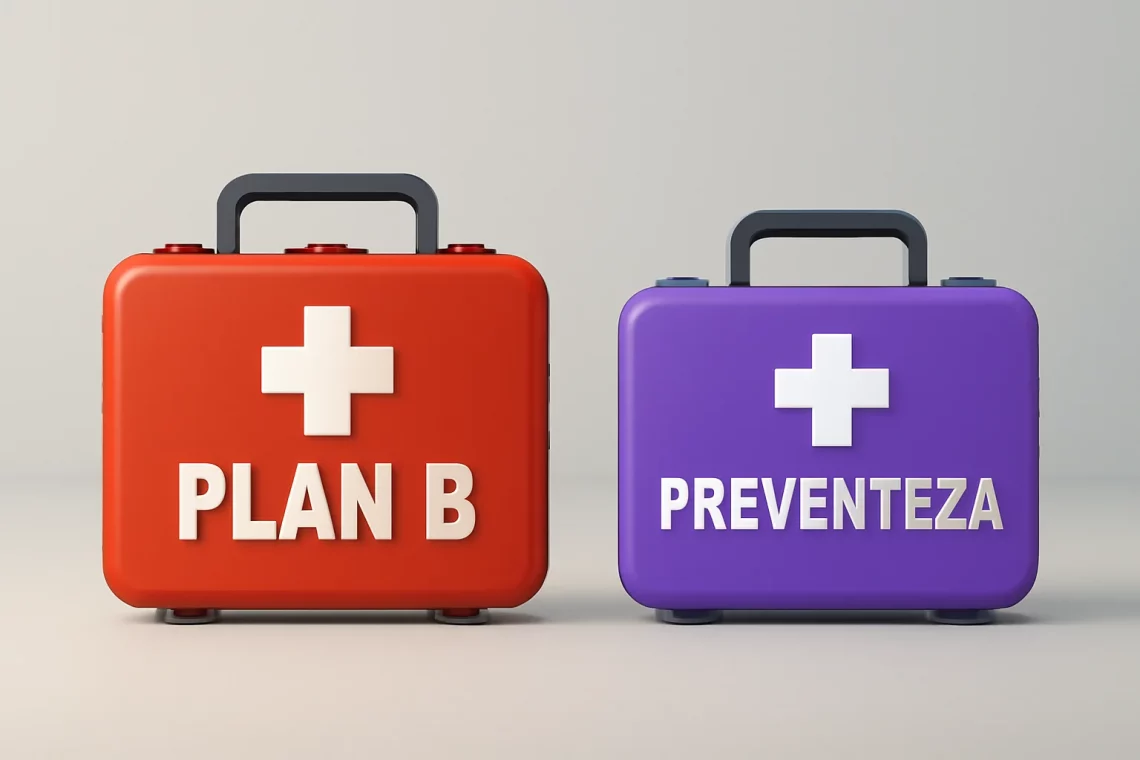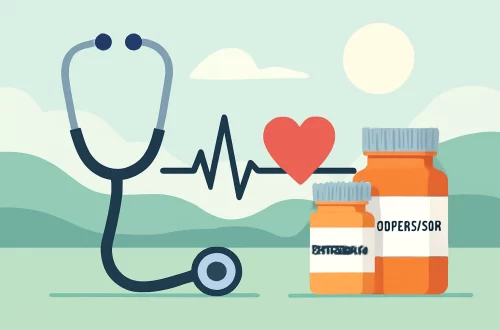
Plan B vs Preventeza: Which Emergency Solution is Right for You?
In today’s fast-paced world, the need for effective solutions to various challenges has never been more critical. Individuals often find themselves facing unexpected situations that require quick thinking and strategic planning. Whether it’s a personal crisis, a business setback, or health-related issues, having a reliable plan can make all the difference in how one navigates through adversity. This is where the concept of a “Plan B” comes into play, representing an alternative course of action that can be employed when the initial plan fails.
Simultaneously, the importance of preventive measures cannot be overstated. Prevention focuses on taking proactive steps to mitigate risks before they escalate into more significant problems. This dual approach of having a backup plan while also emphasizing prevention can empower individuals and organizations alike to handle crises more effectively.
The juxtaposition of Plan B and preventive strategies showcases a comprehensive approach to problem-solving, allowing for flexibility and resilience. Each method has its own set of advantages and disadvantages, and understanding these nuances can help individuals make informed decisions in their personal and professional lives. In this article, we will delve deeper into the intricacies of Plan B and preventive strategies, exploring their definitions, applications, and effectiveness.
Understanding Plan B: The Backup Strategy
When discussing the idea of Plan B, it is essential to define what it entails. A Plan B is essentially an alternative strategy that one can implement when the original plan does not go as expected. This could relate to various aspects of life, including career choices, financial decisions, or even personal relationships.
The concept of a backup plan is rooted in the unpredictability of life. No matter how meticulously a plan is crafted, unforeseen circumstances can arise, rendering the initial strategy ineffective. For example, consider a business that has invested heavily in a marketing campaign. If the campaign fails to attract the desired clientele, having a Plan B allows the business to pivot quickly and try a different approach, thus minimizing potential losses.
Moreover, having a Plan B can significantly reduce stress and anxiety. Knowing that there is an alternative route can provide peace of mind, enabling individuals to take calculated risks without the fear of total failure. It encourages a mindset of resilience, where setbacks are viewed as opportunities to learn and adapt rather than insurmountable obstacles.
However, it is crucial to note that a Plan B should not be seen as an excuse for lack of commitment to the original plan. Instead, it should complement the primary strategy, serving as a safety net. In this way, individuals can remain focused and driven while still being prepared for the unexpected. The key is to strike a balance between commitment to the original plan and readiness to adapt when necessary.
In conclusion, a Plan B is an essential tool for navigating the complexities of life. It not only serves as a safety net but also fosters a proactive mindset that encourages adaptability and resilience. By understanding the value of backup strategies, individuals can better prepare themselves for whatever challenges may come their way.
The Role of Prevention in Effective Planning
While having a Plan B is crucial, prevention plays an equally important role in effective planning and risk management. Preventive measures are proactive actions taken to avoid potential problems before they arise. This could involve various strategies, such as conducting thorough research, implementing safety protocols, or adopting healthier lifestyle choices.
In many contexts, prevention is about foresight. For instance, in health and wellness, engaging in regular exercise and maintaining a balanced diet can significantly reduce the risk of chronic illnesses. By prioritizing preventive measures, individuals can minimize the likelihood of encountering severe health issues that would require extensive intervention later on.
In a business setting, prevention can manifest in risk assessment and management strategies. Companies that regularly evaluate their operations and identify potential risks are more likely to avoid crises. For example, a company might conduct regular audits to ensure compliance with regulations, thereby preventing legal issues that could arise from negligence.
Moreover, preventive planning fosters a culture of responsibility and awareness. When individuals and organizations prioritize prevention, they create an environment where proactive thinking is encouraged. This can lead to a more engaged workforce, as employees feel empowered to contribute to the overall success of the organization by identifying potential risks and proposing solutions.
However, it is essential to understand that prevention does not guarantee that problems will not occur. Life is inherently unpredictable, and despite the best preventive measures, challenges may still arise. This is where the synergy between prevention and a Plan B becomes evident. While preventive strategies can significantly reduce risks, having a backup plan ensures that individuals and organizations are equipped to handle unforeseen circumstances effectively.
In summary, prevention is a vital component of effective planning. By taking proactive steps to mitigate risks, individuals and organizations can create a more secure and resilient future. Coupled with a well-thought-out Plan B, preventive strategies empower individuals to navigate challenges with confidence and adaptability.
Balancing Plan B and Preventive Strategies
The relationship between Plan B and preventive strategies is complementary, yet finding the right balance between the two is crucial. Each approach offers unique benefits and, when combined effectively, can lead to a more comprehensive risk management strategy.
One of the key challenges individuals face is the tendency to focus too heavily on either prevention or having a backup plan. For instance, some may become overly reliant on preventive measures, believing that if they prepare adequately, nothing will go wrong. This mindset can lead to complacency, ultimately resulting in inadequate responses when faced with unexpected challenges.
Conversely, others may prioritize having a robust Plan B without investing in preventive strategies. This approach can create a reactive mindset, where individuals are always waiting for problems to arise rather than actively working to prevent them. Such a mindset can lead to unnecessary stress and a lack of confidence in one’s ability to manage risks effectively.
To achieve a balanced approach, individuals and organizations should cultivate a mindset that values both prevention and preparedness. This involves conducting a thorough risk assessment to identify potential vulnerabilities while also developing backup plans that can be implemented swiftly when needed.
Furthermore, communication plays a crucial role in maintaining this balance. Individuals should engage in open dialogues about risks and uncertainties, sharing their thoughts and strategies with others. By fostering a culture of collaboration and transparency, teams can work together to identify potential problems and develop effective solutions.
Ultimately, the goal is to create a proactive environment where both prevention and backup planning are prioritized. This balanced approach not only enhances resilience but also empowers individuals to take control of their circumstances, transforming challenges into opportunities for growth.
In conclusion, balancing Plan B and preventive strategies is essential for effective risk management. By understanding the strengths of each approach and fostering a culture of proactive thinking, individuals can navigate life’s uncertainties with greater confidence and resilience.
In summary, whether you’re navigating personal challenges or managing organizational risks, the synergistic combination of Plan B and preventive strategies can empower you to face uncertainties head-on. The ability to adapt while also taking proactive measures can significantly enhance your resilience and preparedness for whatever may come your way.
*Disclaimer: This article is not intended as medical advice, and individuals should always consult a qualified healthcare professional for any health-related concerns.*




